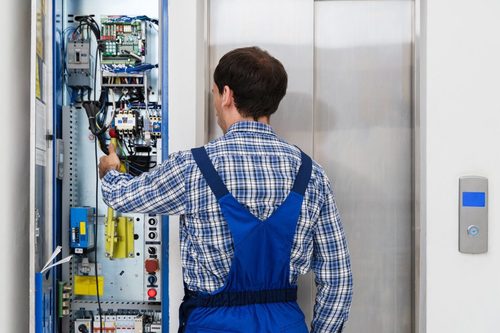A Comprehensive Strategy to Enhancing Efficiency Via Strategic Lift Fixing Techniques
A tactical and methodical technique to lift repair work and maintenance is critical to maximize efficiency and lessen downtime. By resolving common lift issues, executing aggressive maintenance measures, and establishing targeted repair service plans, centers can optimize their lift systems to operate at peak performance levels.
Value of Lift Performance Optimization
Comprehending the relevance of maximizing lift efficiency is critical for ensuring trustworthy and efficient vertical transportation systems in numerous structures and structures. Lifts are necessary components of modern-day facilities, offering upright mobility for residents and items within buildings of differing elevations. By enhancing lift efficiency, building owners and center managers can enhance individual experience, boost energy efficiency, and increase total operational efficiency.
Efficient lift efficiency optimization includes various elements, consisting of speed, capability, power security, maintenance, and consumption requirements. Properly optimized lifts can decrease wait times for users, especially in high-traffic structures, resulting in enhanced fulfillment and performance. In addition, enhanced lifts add to power cost savings by making use of advanced control systems and innovations that minimize power usage without jeopardizing efficiency.

Identifying Common Lift Issues
Determining typical lift problems is crucial for preserving the functional effectiveness and safety and security of vertical transportation systems in structures. Recognizing these issues can aid prevent malfunctions, decrease downtime, and expand the lifespan of the lift equipment. One typical trouble that structure managers and maintenance groups usually encounter is irregular or jerky movements during operation. This problem can be indicative of issues with the lift's motor, control system, or perhaps the alignment of the lift automobile.
An additional prevalent lift problem is weird noises rising from the lift shaft or equipment space. These noises can range from grinding or scraping noises to loud clunking sounds, every one of which may signal underlying mechanical problems that need immediate interest. In addition, frequent door breakdowns, such as doors closed or shutting properly, can interrupt the smooth circulation of guests and posture security dangers.
Applying Aggressive Upkeep Procedures
To maximize the performance and durability of lift systems, aggressive upkeep actions play a critical function in making certain operational dependability and safety and security. lift repair. Applying positive maintenance involves methodically checking, maintenance, and repairing elements prior to they fail, therefore protecting against costly downtime and prospective safety hazards. Regularly arranged examinations can help determine small concerns before they rise right into major problems, ultimately prolonging the lifespan of lift systems
One trick facet of proactive upkeep is developing a thorough upkeep routine based on producer suggestions and industry best techniques. This routine ought to lay out tasks such as lubrication, positioning checks, and component substitutes at defined periods. Additionally, implementing problem tracking techniques, such as resonance analysis and thermal imaging, can help identify early signs of wear or malfunction.
Moreover, training upkeep personnel on proper evaluation strategies and precautionary maintenance treatments is necessary for the effective implementation of aggressive maintenance measures. By promoting a society of aggressive upkeep within an organization, lift systems can operate at peak view website performance levels, reducing disruptions and making sure the safety of customers.
Establishing Targeted Repair Service Strategies
Upon evaluating the upkeep records and efficiency data, the design team can establish targeted repair service plans to maximize and attend to specific concerns lift system performance. These repair service plans are tailored to the determined issues, making certain that resources are concentrated on settling essential problems effectively. By focusing on repairs based on their influence on performance and security, the targeted repair strategies aid decrease downtime and upkeep expenses while maximizing the lift system's dependability.
Establishing these plans includes a thorough evaluation of the lift system elements, consisting of motors, wires, brakes, and control systems. With this comprehensive analysis, the engineering team can determine the root creates of any type of malfunctions or degradation in efficiency. This details is after that made use of to create a roadmap for the repair service procedure, outlining the required steps, timeline, and resources required to resolve each problem effectively.
Furthermore, targeted repair service strategies might consist of preventative steps to improve the lift system's longevity and performance. By proactively attending to prospective concerns before they intensify, these plans add to the overall performance and safety and security of the lift system.
Making Use Of Data-Driven Insights
Harnessing the power of data-driven understandings is vital in optimizing lift system performance and maintenance effectiveness. By leveraging information analytics, lift drivers can make enlightened decisions that lead to enhanced operational performance and cost savings. With the analysis of historical efficiency patterns, data and fads can be recognized, making it possible for predictive upkeep approaches to be executed. These predictive maintenance strategies assist prevent why not try these out unanticipated failures, minimize downtime, and expand the life expectancy of lift systems.

Final Thought
In conclusion, image source enhancing lift efficiency is vital for making certain performance and safety and security in structures. By recognizing typical lift problems, executing positive maintenance steps, establishing targeted repair strategies, and making use of data-driven insights, organizations can improve efficiency and reduce downtime. It is essential to take a detailed method to lift fixing methods to make the most of functional effectiveness and guarantee the longevity of lift systems.
By dealing with typical lift concerns, executing proactive upkeep procedures, and creating targeted repair work strategies, centers can enhance their lift systems to run at peak performance levels.One more common lift problem is unusual noises rising from the lift shaft or machinery space.Upon analyzing the upkeep records and performance information, the engineering team can create targeted repair service strategies to enhance and deal with details concerns lift system functionality. By prioritizing repair work based on their impact on efficiency and security, the targeted fixing plans aid minimize downtime and upkeep prices while making best use of the lift system's dependability.
It is important to take a comprehensive method to lift repair work techniques to make best use of operational performance and make sure the long life of lift systems.